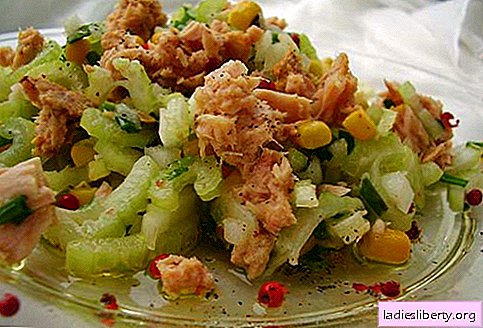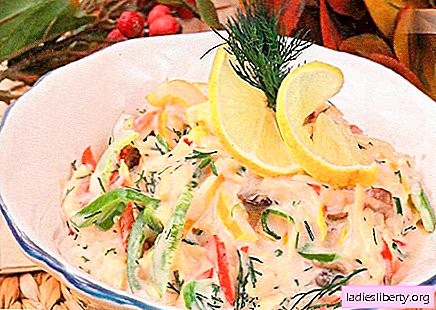
Sage - General Description
Sage - This is an annual or perennial plant, which can reach 120 centimeters. The stem is erect or ascending, the leaves are dissected or whole, located opposite. The leaves of some species are themselves very decorative because of the colorful color. Sage flowers are two-lipped, the upper lip of which hangs or partially covers the lower. The plant blooms in a variety of shades of pink, purple, orange-red, white and yellow.
The name of the bush comes from the Latin language and means "protect", "save", so it is also called salvia. The first mention of sage is found in Pliny, thus, the plant was used in the Roman Empire. Hippocrates called sage "sacred grass." In the early Middle Ages, medicinal sage was widely distributed in the monastery gardens, where it was cultivated as a medicinal plant and spice. And today it is used in medicine, horticulture and cooking. Also, the bush is known as a good honey plant.
Sage - types and places of growth
In the clan of sages, there are about 900 different species. Salvia grows in the temperate and tropical regions of the world, except Australia. Salvia officinalis originates from the Balkans and the Mediterranean region and is widely naturalized. In nature, "sacred grass" lives in sunny places: on rocky slopes, in bright forests, flood and dry meadows, gardens, kitchen gardens and wastelands. It grows like wild or cultivated grass. Salvia does not tolerate stagnation of water; they prefer sandy soils rich in humus.
Sage - healing properties
Dried and fresh herbs of medicinal sage is a traditional folk healing remedy. Salvia leaves have an astringent, disinfectant, anti-inflammatory, emollient and hemostatic effect. A plant is used to rinse with bleeding and inflammation of the gums, stomatitis, bronchitis, tonsillitis, catarrh of the upper respiratory tract.
Sage is considered an excellent tonic and a means to help cope with excessive sweating and stomach cramps, female infertility and diabetes.
Salvia is used in Russian medicine for pulmonary tuberculosis, edema, polyarthritis, atherosclerosis, radiculitis, as well as gynecological diseases in the form of douching. In foreign medicine, sage is recommended for peptic ulcer, gastrointestinal inflammation, colitis, gastritis, liver and kidney diseases, as well as for the treatment of purulent wounds.
Sage - dosage forms
Medicinal raw materials are flowering tops and leaves of salvia. They are usually collected in the first year of vegetation at the end of summer. In the following years, the leaves of the "sacred grass" are harvested two or three times from the beginning of flowering. Leaves are dried in special dryers, under a canopy or in the attic.
The yield of dry mass in the first collection is 25%, with the last reaches 35%. Well-dried raw materials are packaged in bales and kept in a dry room. In medicine, salvia officinalis is used as a raw material for obtaining decoctions, tinctures and extracts. Fatty oil from sage seeds is considered a bactericidal agent, so it is used for inhalation.
Sage - recipes
As a compress for inflammation of the wounds, you need to prepare an infusion of sage leaves. Two tablespoons of raw materials are poured into a glass of boiling water and additionally heated in a steam bath. After cooling, the broth is drained and squeezed out, adding a little water so that the total volume is 200 milliliters. Use infusion for two days.
With pulmonary tuberculosis, stomach cramps, gastritis, peptic ulcer, cystitis and cholecystitis, tea is prepared. To do this, one teaspoon of powdered powder is poured into a glass of boiling water and insisted for 20 minutes. You need to drink the infusion warm 1 glass 3 times a day.
Sage - contraindications
Salvia officinalis is an extremely valuable shrub, but this "sacred herb" is insidious, and some people do not fully understand what its harm lies in. Salvia should not be consumed with reduced thyroid function. The plant is contraindicated in acute inflammation of the kidneys, as well as a strong cough, because sage will only strengthen it. With hypertension, sage is also poorly tolerated.
It is undesirable to use salvia for more than 3 consecutive months, it is better to take breaks. And categorically, drugs with sage should not be taken during pregnancy, because they reduce progesterone. Nursing mothers need to abandon sage, as it reduces the amount of milk. Grass is also contraindicated with a long delay of menstruation.
Comments











